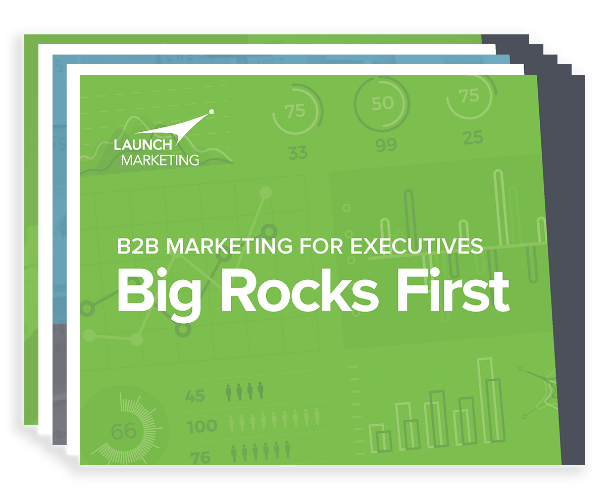When generating your ideal leads, one of the first essential steps is understanding how to target the audience that is ideal for your organization. If you understand who you’re reaching, it’s easier to understand where and how to reach them, and what to offer them once you do.
B2B audiences are made up of individuals with different cultures, backgrounds, preferences and needs. There will never be a “one-size-fits-all” approach that resonates with everyone, or even every member of your target audience. However, there are characteristic trends that are true for a large number of B2B audiences, and taking them into consideration can elevate your lead generation strategy in a meaningful way.
The Unique Characteristics of B2B Audiences
They’re not quick purchasers or middle-of-the-night shoppers
Unlike B2C audiences, B2B audiences are typically making much larger, more invested purchases from a B2B company, compared to smaller personal B2C purchases like a refillable product on Amazon. In fact, the B2B sales process today takes 22% longer than it did just five years ago. Add on the fact that this doesn’t include the time a B2B buyer spends doing their own research and you have what can feel like an agonizingly long buying process.
The end user isn’t the only audience member with influence
For a B2C purchase like a dishwasher or other household appliance, a B2C buyer might consult with a spouse or landlord before hitting the purchase button, but much of the decision-making rests with that one individual. However, B2B purchases don’t solely involve input and consult from the end user. The B2B purchase decision comes with the weight of multiple parties, from IT managers to finance directors all the way up to the CEO. To help better understand the key B2B players you need to be cognizant of in your marketing efforts, we’ve highlighted the primary B2B audience members that can contribute to a purchase decision.
Your B2B Audience Star Lineup
1. Users
As discussed earlier, the user is common across both B2B and B2C audiences. However, while the B2C user is typically a single individual, B2B users can include several team members within a company, or what would more aptly be called a “user group.” Since B2B products usually offer an all-encompassing solution with multiple features to address an organization’s pain point, it’s rare in the B2B world that a product or service will only be utilized by one individual.
Users, or the team that manages them, will be the first in an organization to send up a smoke signal that they’re in need of a new or better solution. It’s essential to understand your user groups so you can create broader, top-of-funnel content that will attract their attention and show them why your product is the right solution for them. Users also want to see how your product works first-hand, so demos and case studies will be valuable marketing assets for them as well.
What they’re looking for:
- High-level overview as to why your solution is a standout and a top choice for consideration
- Essential features and functionality, including product demos, support options and troubleshooting capabilities
2. Influencers
During their research phase, users are likely to come across B2B influencers outside of your organization who can potentially halt or encourage their research. You can learn about influencers by understanding the channels your audience spends time on. Are they following influencers on LinkedIn or having conversations with them on Twitter? Or maybe they aren’t looking for B2B influencers on social media, but instead prefer case studies and spotlights that highlight influencer opinions.
B2B influencers can also include people within the organization itself. For instance, if it’s a larger company, there may be different departments where your solution is already being employed but hasn’t been absorbed by all departments. Or maybe there is communication within the industry that trickles into your target leads, as similar organizations share their experiences with B2B products.
That’s why it’s important to continue engaging with acquired leads. The marketing process shouldn’t end once a lead has been converted. Keep in mind that nurtured leads make 47% larger purchases than non-nurtured leads, so continuing to nurture your leads can help ensure that your brand remains top of mind in their buying process and turns them not only into customers but also positive influencers.
What they’re looking for:
- Differentiating and standout features
- Other influencer and industry opinions
3. Buyer
The buyer is the one who will take economic factors and budgeting into consideration most heavily. While users and influencers may love your product, the buyer can easily veto it if it doesn’t fall within the organization’s budget or the overall value isn’t translated well. Prior to lead targeting, be sure to research the size and budget of the organization so that it matches with the cost and scope of your product or service offering.
It can also be helpful for buyers to be presented with comparison marketing materials. They may not be familiar with the options on the market, so having side-by-side price comparisons or marketing materials, including pricing, can be pivotal for how buyers view your offering and how easily users can present it to buyers internally.
What they’re looking for:
- Pricing
- Overall value
- Side-by-side comparisons
- Full outline and scope of product or service features
4. Decision Maker
Last, but certainly not least, is the most important deciding factor—the decision maker. The form that this person is going to take is going to vary by the company, which is why it’s important to understand the structure of the companies you’re targeting. This can be done simply by looking at their company website or employing a light Google search. If you’re coming up short, LinkedIn can also be a good resource to understand the internal organization of your target companies.
Typically, a decision maker is going to be higher up on the team ladder. For example, a CEO or other C-suite member might be the most important sign off in an organization. Or, if it’s a larger organization, managers or even the buyers may be the ones giving the “OK” to a new software. Even if internal users can present all the facts accurately, it will ultimately come down to the discretion of the decision maker.
What marketers can do to anticipate the thoughts of the decision maker is to understand the level of vetting your decision maker will have to do. If your product or service comes at a higher cost, communicate the value of your product succinctly and thoroughly within your marketing materials. These decision makers are often being confronted with a lot of decision making, so providing them with the essential facts and figures needed within your marketing will assist other organization members in communicating effectively to decision makers.
What they’re looking for:
- Understanding of pain-point addressed
- Succinct feature information
- Big-picture value and alignment with company goals
By using these common B2B audience members as a guide and employing your own research, you can craft your B2B buyer personas. With audience understanding and personas in place, your marketing can be more targeted and more effective in generating leads that are qualified for your sales team.



There are no comments